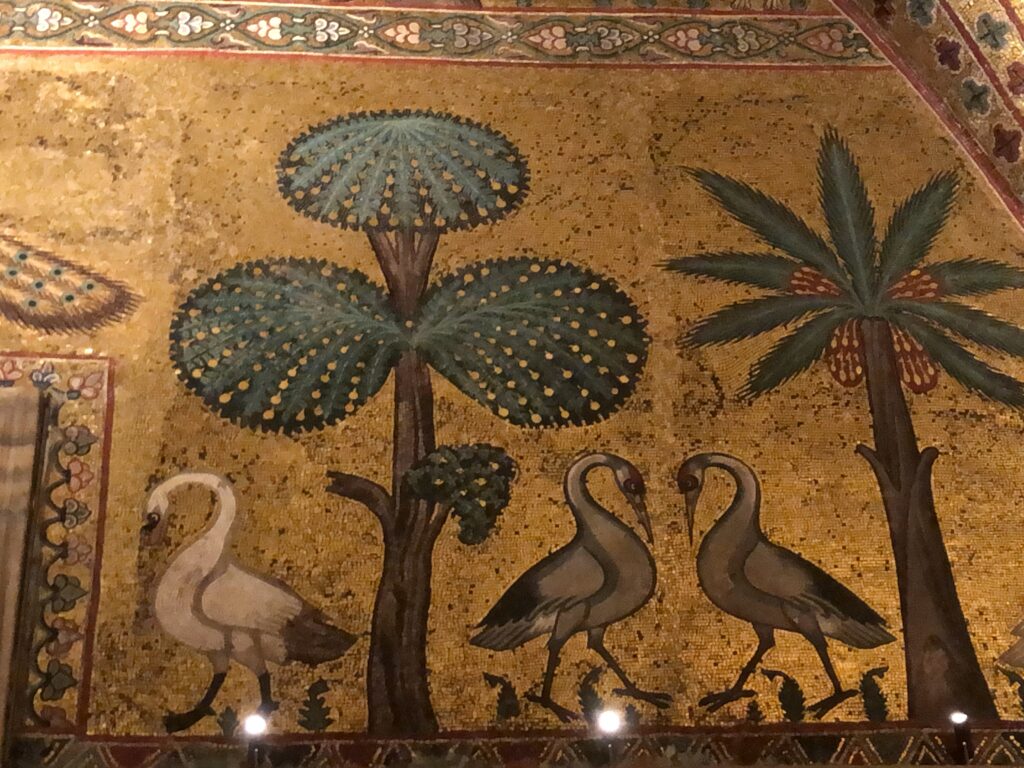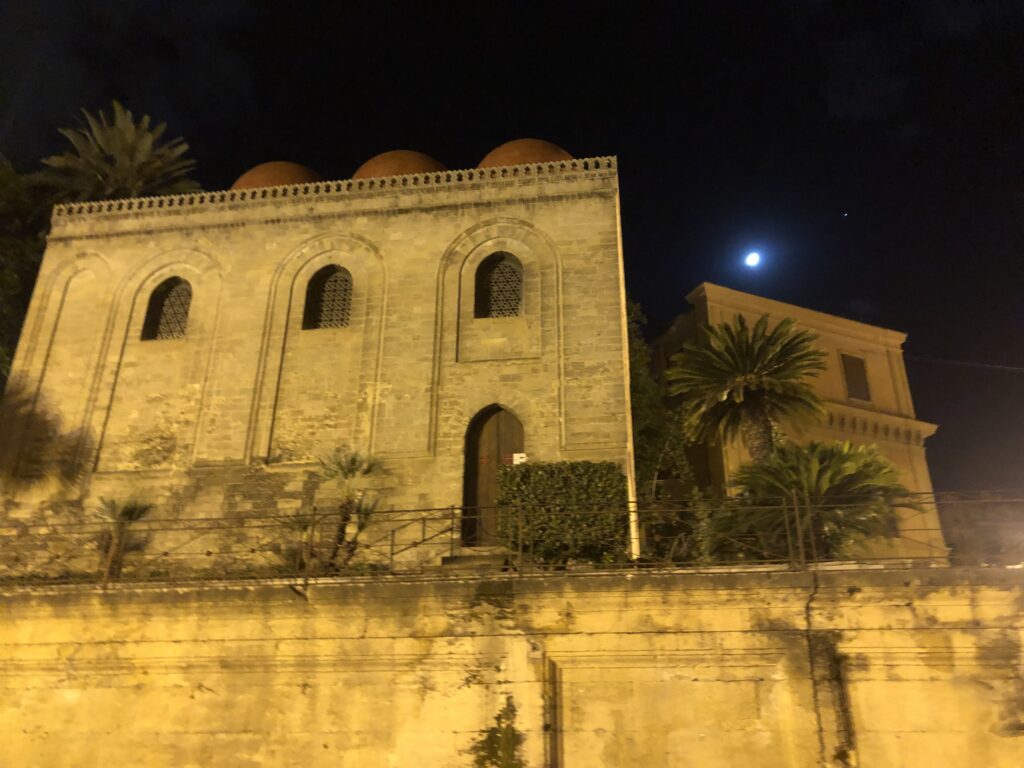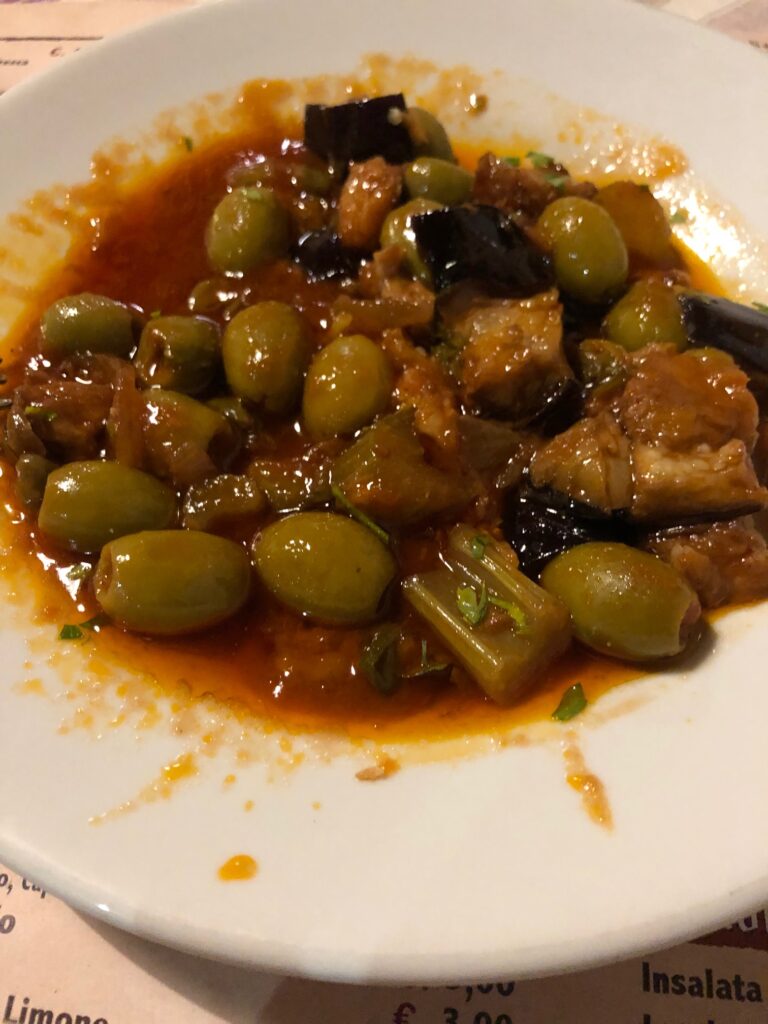
You could write the history of Palermo in gold mosaic, in eggplant and raisins, in 14th century palaces whose doors stand alongside a tangle of rubble, of blood. You could stand looking at scooters wheeling down a medieval alleyway and wonder about that history, how it fits coherently, those glittering domes and walls of gold-leaf tessesrae of world treasures mastered by Roger II, that great unsung Norman whom we can thank for red Arab domes and art brilliance.
You move out of the way as an egg-shaped car comes towards you, take a seat at the storefront bar. Order a glass of local village wine. Think about how caponata, its silky sweetened eggplant, raisins, olives couldn’t exist without Arab markings. It was day when you started putting together this history; now a half moon has risen over the palm trees. The piazza with an abandoned convent is packed tight with stools, people drinking. Cars are leaning on horns trying to get somewhere, but where, a notch ahead, it moves like the ocean’s surf, waves of energy roaring forward, then pull back. Some people drink from their cars in traffic.
This is a land clawed back from the Mafia. Playgrounds post plaques that they say we don’t pay. All around town you see attempts at this other mythology. It is a city that’s back and a city beyond, worthy of its mystery.


